- M.A
- Rug & Carpet
- 3514 views
- 0 comments
Rug hooking is both an art and a craft in which loops of yarn or fabric are pulled through a stiff weave, such as burlap, linen, or rug warp. The loops are pulled through the backing material by using a crochet-type hook mounted in a handle (usually wood) for leverage.
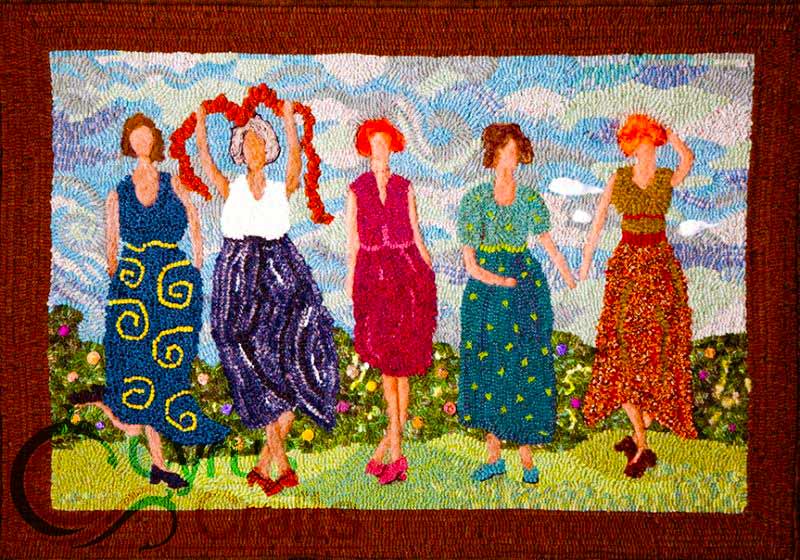
History of Rug Hooking
Rug hooking has been around for centuries. Historians have debated exactly how far back it can be traced. According to some, the first hand-hooked rugs were made by descendants of the ancient Egyptians between the third and seventh centuries. Others say that it originated in China.
In the mid-1800s, rug hooking appeared in New England and the Canadian Maritime provinces. Colonial women found other ways to make their homes comfortable if they couldn't afford to buy rugs imported from Europe. Using rags to make hand-hooked rugs was the answer. The rug's base was made from the burlap sacks that the livestock feed came in, and the fabric was any cloth too old for wearing or making into quilts. The rag rugs were quick to make it helped pass the time during the brutally cold winters when there wasn't much going on outdoors. Now, this type of carpet has many fans worldwide, from East Asia to Canada.
Cyrus Crafts; Luxury & Unique Products
The Different Styles of Rug Hooking
Rug hooking is one of the best crafts because you don't have to learn many different stitches and techniques. Learn one basic stitch, and you've mastered it.
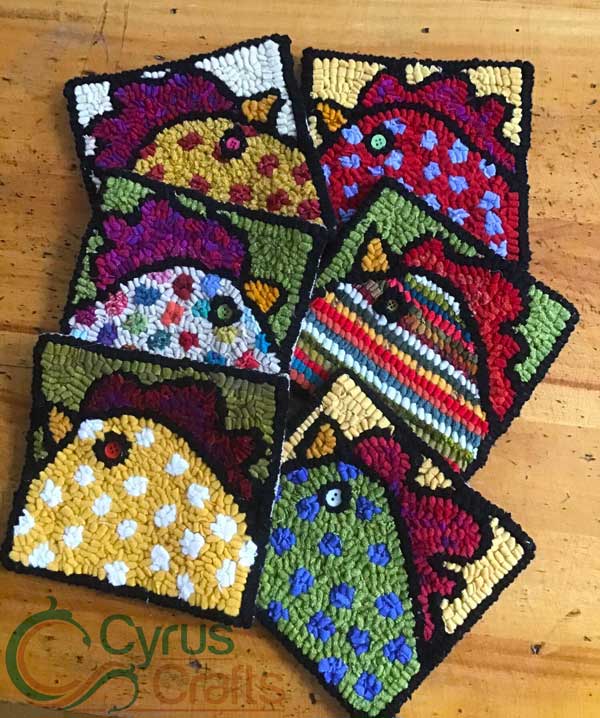
In the following, we see some of the most famous designs:
Primitive Style in Rug Hooking
Beginner rug hookers will probably find this style the easiest. Rug hooking of this style uses wide strips of wool, normally at least 1/4" wide, and a very simple drawing. It can be something other than realistic in style or coloring. A child's coloring
the book has some excellent patterns for primitive rugs, or you can draw your own.
Realistic Style in Rug Hooking
This handmade rug is hooked using a much narrower strip of wool, about 3/23" up to 1/8" wide. The goal is to make the rug as realistic and detailed as possible. In most cases, you only use white wool that has been dyed to the exact shades needed. The rug actually comes alive before your eyes.
Pictorial Style in Rug Hooking
Rug hookers can use this style to create a picture or scene, such as a landscape. The width of wool the rug hooker uses may vary. It can be entirely wide, entirely narrow or a mixture of both. The object is to make the rug look real. Many pictorial carpets in the market are woven with this method. However, most Persian pictorial carpets are made with carpet weaving techniques.
Waldoboro Style in Rug Hooking
Waldoboro, Maine, is the town where the women developed their style of rug hooking. It's unique in a couple of ways. First, the rug is hooked on a wool backing rather than burlap, monk's cloth, or linen. Secondly, the hooked design is cut and sculpted to create a three-dimensional design.
Rug Hooking Learn for Beginners
Learning rug hooking is reasonably straightforward once you get the hang of it. A burlap or linen backing is pulled through strips of wool cloth one by one. The key to sticking with it is starting with the right supplies, tips, and inspiration, all of which you can find here:
Start by stretching your material over the frame or hoop, keeping it as tight and even as you can. This will help you create consistent, uniform loops. Hold the first wool strip between your thumb and index finger in your non-dominant hand.
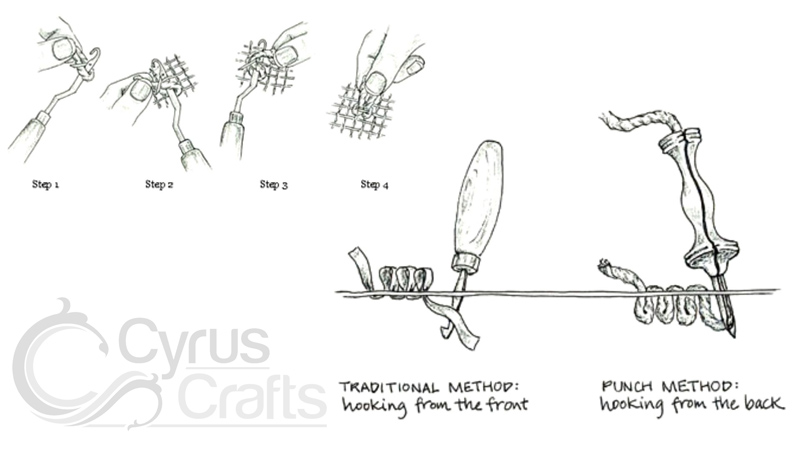
Push your hook through the backing inside the line of your design pattern using your dominant hand. Pull the tail end of the wool strip through the hook, catch it, and place it on the end of the hook. It would help if you had a quarter inch of the end showing.
Push the hook through the hole next to the end you pulled up. Use your fingers to feed the strip beneath the backing, grasp it with the hook and pull a loop roughly a quarter inch above the surface. Release the loop from the hook, put the hook into the next hole and start again. Try to make your loops the same size.
Skip the next hole to keep your wool from being too tight. It can prevent your punch needle rug from lying flat, and it wastes wool. Make sure your holes are evenly spaced throughout your pattern, so you will hook two holes, skip one, etc.
When you complete the strip, there will be a small tail at the end. From the side, this row should look uniform.
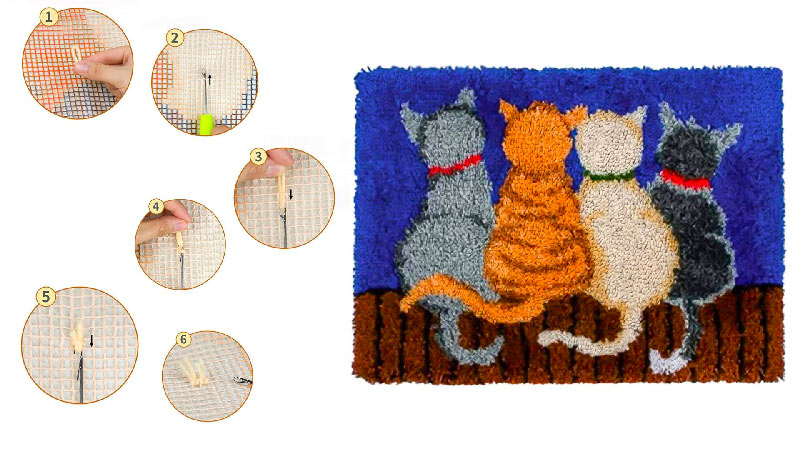
Pull the tail of your next wool strip through the same hole you pulled the tail of your previous strip through. Pull the new strip's end near the original strip's tail, release it, then push the hook into the hole next to the two tails. Pull a loop to the first strip, release it, then reach and put a loop in the next hole. e. Repeat this pattern, skipping a hole and pulling up the tails as you work.
When you’re finished, cut the excess backing away. Use it to bind the rug by folding it and sewing along the rug's backside.
Rug Hooking Supplies
- backing material (such as Scottish Burlap)
- strips of cloth or yarns or lengths of ribbon
- frame or hoop to hold your work
- rug hook(s)
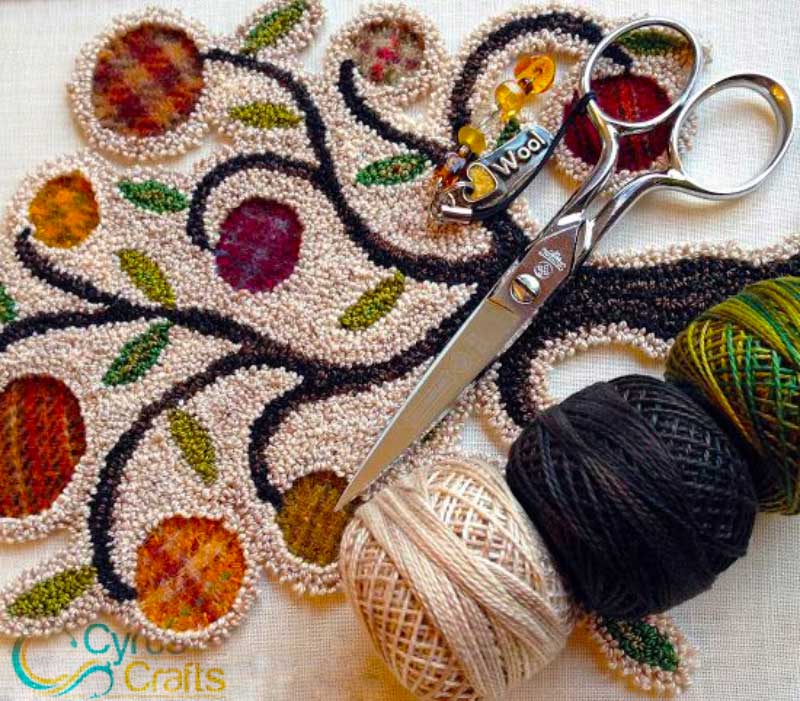
How to Clean a Hooked Rug?
Vacuuming is perfectly acceptable for cleaning a hooked rug daily as long as you don't use the beater head attachment. Make sure you remember to do the back as well. The following is only recommended for more thorough cleaning if your rug is hooked on linen foundation cloth. NOT BURLAP!
If you spill something on your punch needle rug, the liquid will bead on top of the rug. The lanolin in wool naturally repels water, so you have time to soak up the liquid with a paper towel before it soaks into the rug. If your rug gets soiled, spot cleaning with a damp cloth and a wool soap such as Eucalan is recommended. With Eucalan, you won't have to worry about soapy residue. It is optional to remove all the Eucalan as it does contain conditioning ingredients for your wool.
How Can Hooked Rugs Be Used in Home Decoration?
These hook rugs are usually smaller than 3 x 5 rugs. Therefore, they can be used as doormats or sofa shawls. They are also sometimes used as cushions. They can also be used as wall paintings.
CyrusCrafts Rugs Chain Store: North America
CyrusCrafts NA is seriously pleased to show you the evolution of Persian rug chain stores in North America. The mission has always been to bring beauty and craftsmanship of the most exquisite Persian carpet to homes and offices and we are glad we have done this in several key locations.
CyrusCrafts Toronto, Ontario Online Rug Store
Since we opened our store a couple of years ago, people who are interested in rugs and the arts in Toronto, Ontario have come to know us well. We offer an enormous stock of area rugs and runner rugs in Toronto that match every individual preference.
Feel free to share your experiences in regards to using hooked rugs in the comments below.























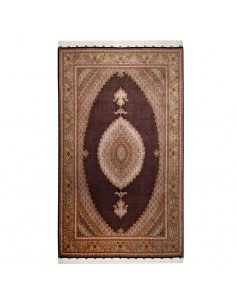

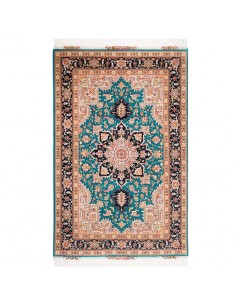

Comments (0)